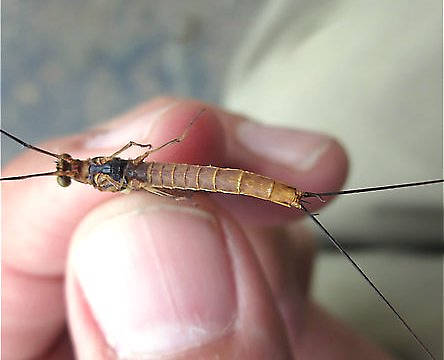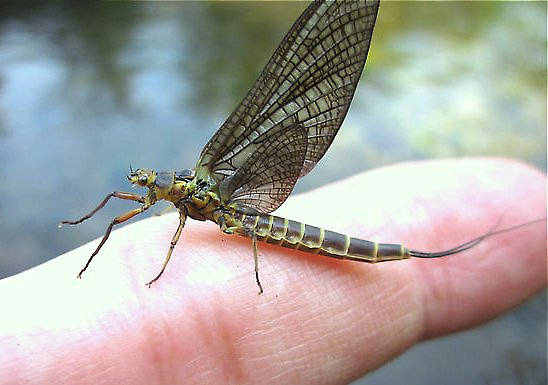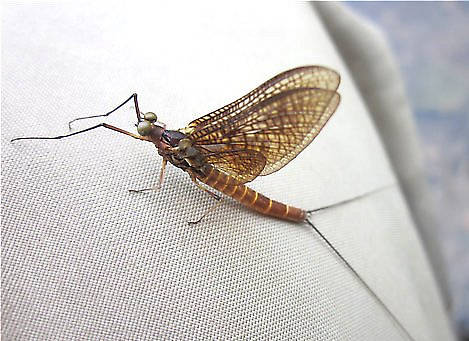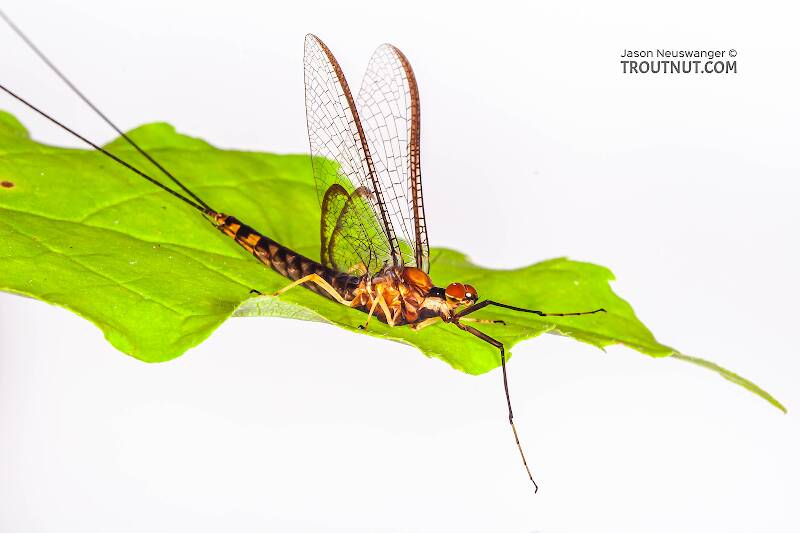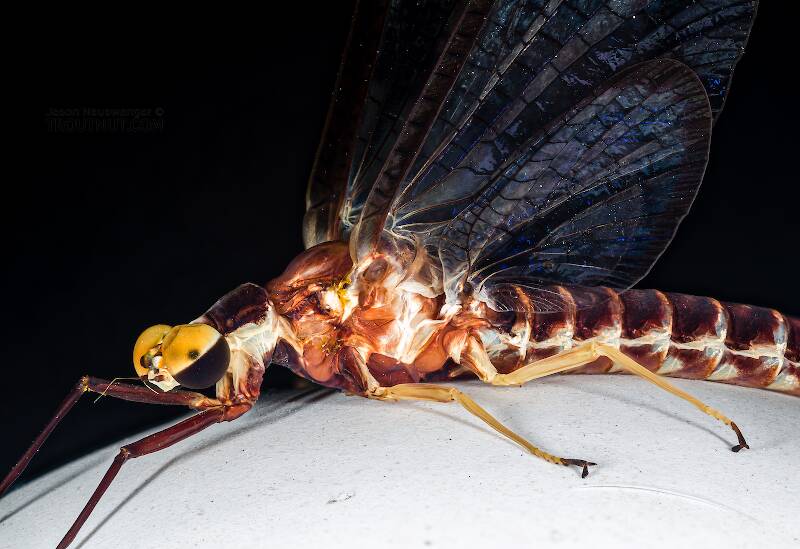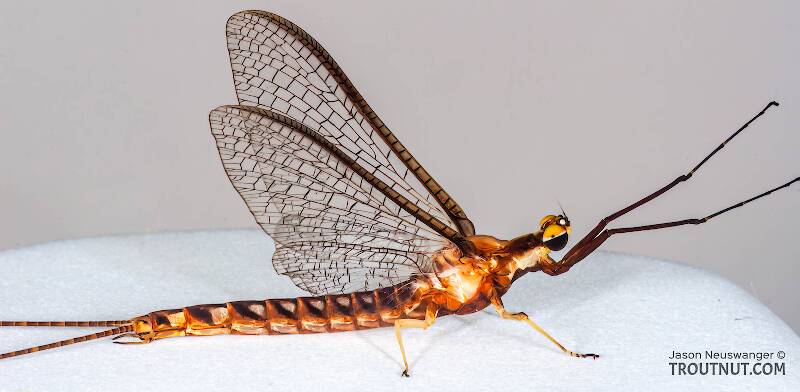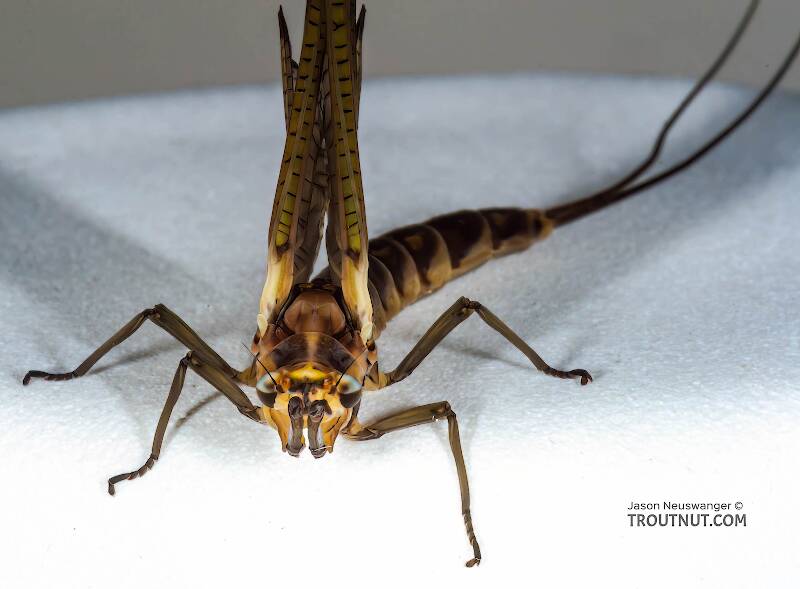
Salmonflies
Pteronarcys californica
The giant Salmonflies of the Western mountains are legendary for their proclivity to elicit consistent dry-fly action and ferocious strikes.
Featured on the forum

As far as I can tell, this species has only previously been reported from one site in Oregon along the Columbia gorge. However, the key characteristics are fairly unmistakable in all except for one minor detail:
— 4 small yellow spots on frons visible in photos
— Narrow occipital spinule row curves forward (but doesn’t quite meet on stem of ecdysial suture, as it's supposed to in this species)
— Short spinules on anterior margin of front legs
— Short rposterior row of blunt spinules on abdominal tergae, rather than elongated spinules dorsally
I caught several of these mature nymphs in the fishless, tiny headwaters of a creek high in the Wenatchee Mountains.
— 4 small yellow spots on frons visible in photos
— Narrow occipital spinule row curves forward (but doesn’t quite meet on stem of ecdysial suture, as it's supposed to in this species)
— Short spinules on anterior margin of front legs
— Short rposterior row of blunt spinules on abdominal tergae, rather than elongated spinules dorsally
I caught several of these mature nymphs in the fishless, tiny headwaters of a creek high in the Wenatchee Mountains.

Troutnut is a project started in 2003 by salmonid ecologist Jason "Troutnut" Neuswanger to help anglers and
fly tyers unabashedly embrace the entomological side of the sport. Learn more about Troutnut or
support the project for an enhanced experience here.
Identification: Key to Genera of Ephemeridae Duns and Spinners, Couplet 2
Identification: Key to Genera of Ephemeridae Duns and Spinners, Couplet 2
Error: Tried to access a key that isn't live.
Adapted from Merritt R.W., Cummins, K.W., and Berg, M.B. (2019)
This couplet refers figures (usually designated 'sf') from this source.
You will need the source (make sure to get the same edition!) to see them.
This couplet refers figures (usually designated 'sf') from this source.
You will need the source (make sure to get the same edition!) to see them.
| Option 1 | Option 2 |
|---|---|
| Head with frons greatly expanded below compound eyes (source fig 13.251) | Head with frons not extending below compound eyes (source fig 13.252) |
| Wing membranes tinted amber or purplish brown | Wing membranes in spinners transparent or occasionally slightly tinted yellow |
| Male penes recurved ventrally (source fig 13.250) | Male penes not recurved as described, but may be hooked or curved medially (source fig 13.253) |
3 Example Specimens | 5 Example Specimens |
| Litobrancha Species Litobrancha recurvata | Hexagenia |
Adapted from Merritt R.W., Cummins, K.W., and Berg, M.B. (2019)
The current couplet is highlighted with darker colors and a icon, and couplets leading to this point have a icon.
Leads to Ephemera:
- Three tails (i.e., terminal filament subequal to cerci)
- Forewings, and sometimes hind wings, prominently mottled with dark markings
- Crossveins of forewings near bullae crowded together (source fig 13.168a)
Leads to Couplet 2:
- Two main tails (i.e., terminal filament vestigial or clearly shorter than cerci)
- Forewings and hingwings not prominently mottled, but may be shaded along margins
- Crossveins of forewings near bullae not crowded together
Couplet 2
Couplet 2 (You are here)
Leads to Litobrancha
(Litobrancha recurvata):
(Litobrancha recurvata):
- Head with frons greatly expanded below compound eyes (source fig 13.251)
- Wing membranes tinted amber or purplish brown
- Male penes recurved ventrally (source fig 13.250)
Start a Discussion of this Couplet
References
- Merritt R.W., Cummins, K.W., and Berg, M.B. 2019. An Introduction to the Aquatic Insects of North America (Fifth Edition). Kendall/Hunt Publishing Company.


